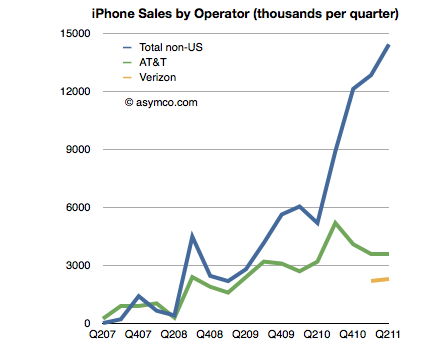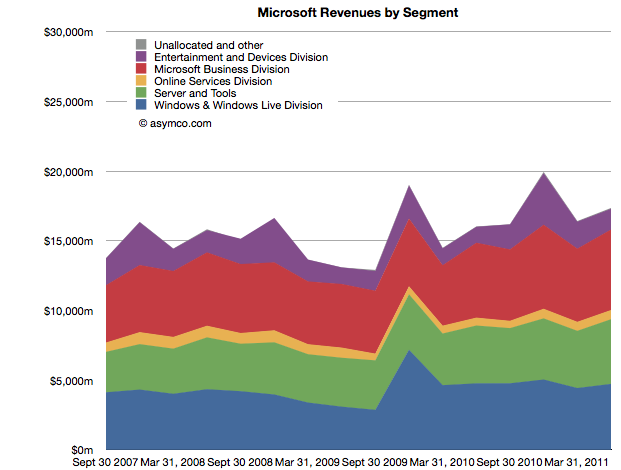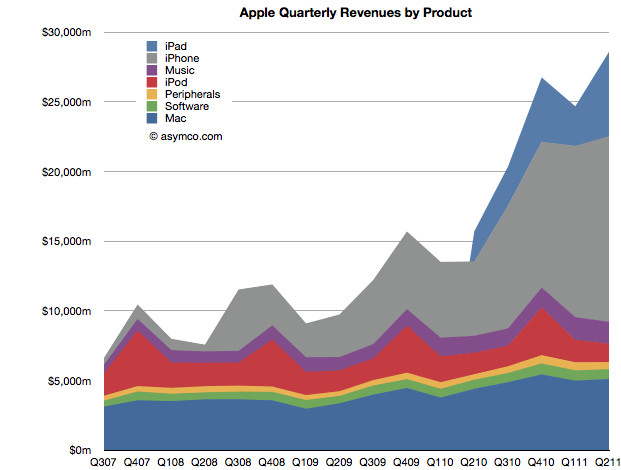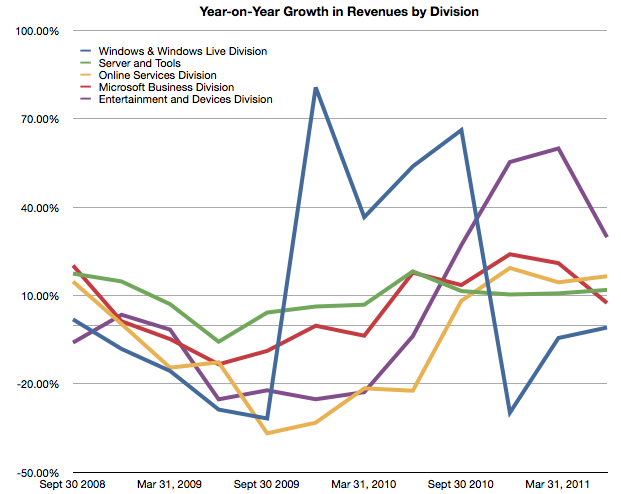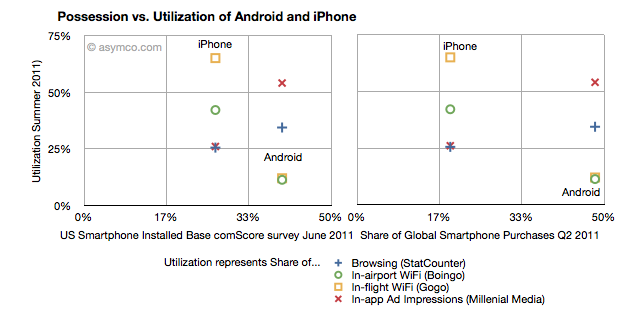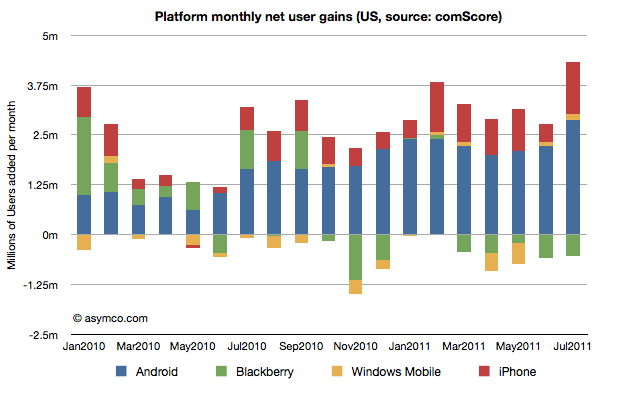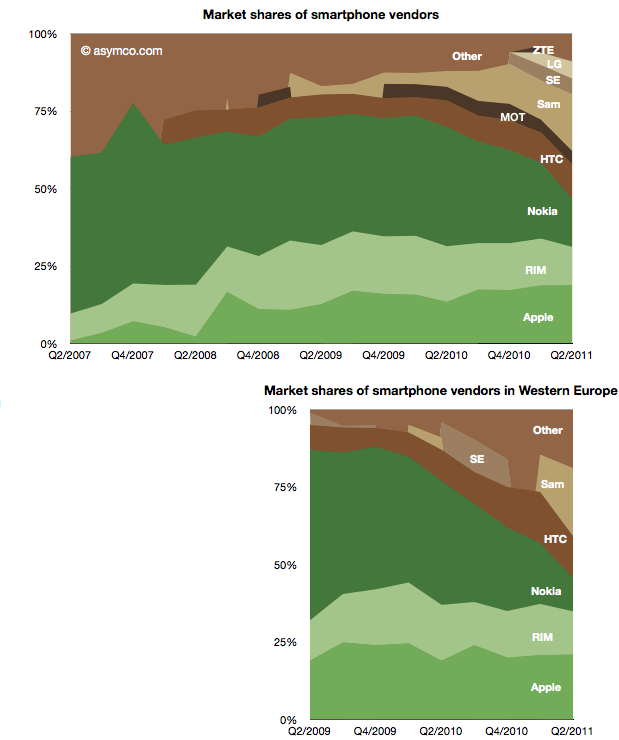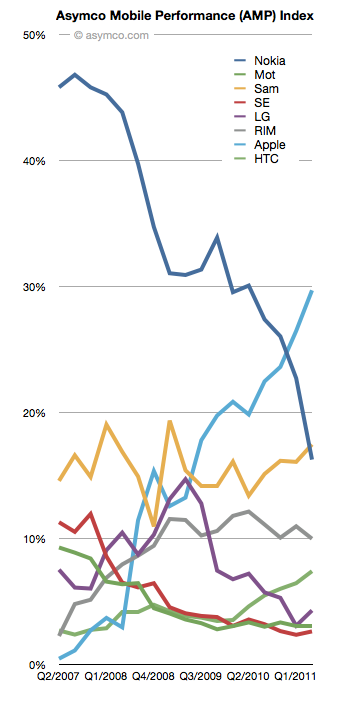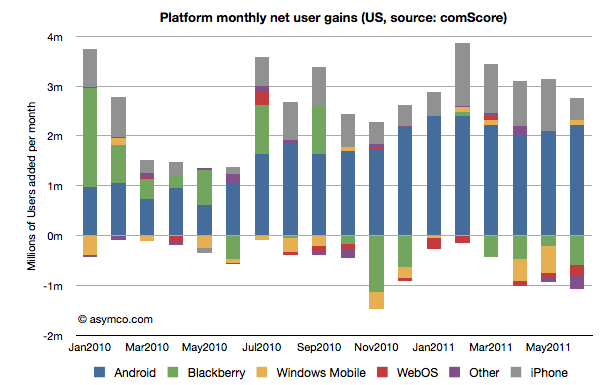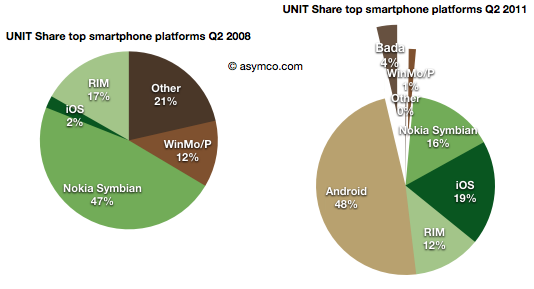I’ve been asked what will be the effect on the market of the iPhone 4S. Actually the question was what would be the effect on the market of there being no iPhone 5.
I’d answer that the iPhone 4S is a product designed to compete for two markets: (1) half the current iPhone users who bought a phone prior to the iPhone 4 and (2) non-iPhone users, typically non-smartphone users.
I’ll describe each market briefly.
The current iPhone users
Tim Cook said that half of all iPhones sold to date have been iPhone 4’s. That means that about 70 million iPhone 4’s have been sold. Those are not a target market because of three reasons:
- The vast majority of those users are still paying for their iPhone 4 through the subsidy model used to sell them and to change phones today would incur a cash penalty.
- Customer satisfaction surveys show that they have 90%+ satisfaction rating for their iPhone 4 and we can therefore assume that they are not looking for something better
- Their iPhones are practically new and they still work and are upgradeable.
The other 70 million or so iPhone users have either a 3GS or a 3G iPhone. These are a very different market for three reasons: Continue reading “Why is there no iPhone 5?”

